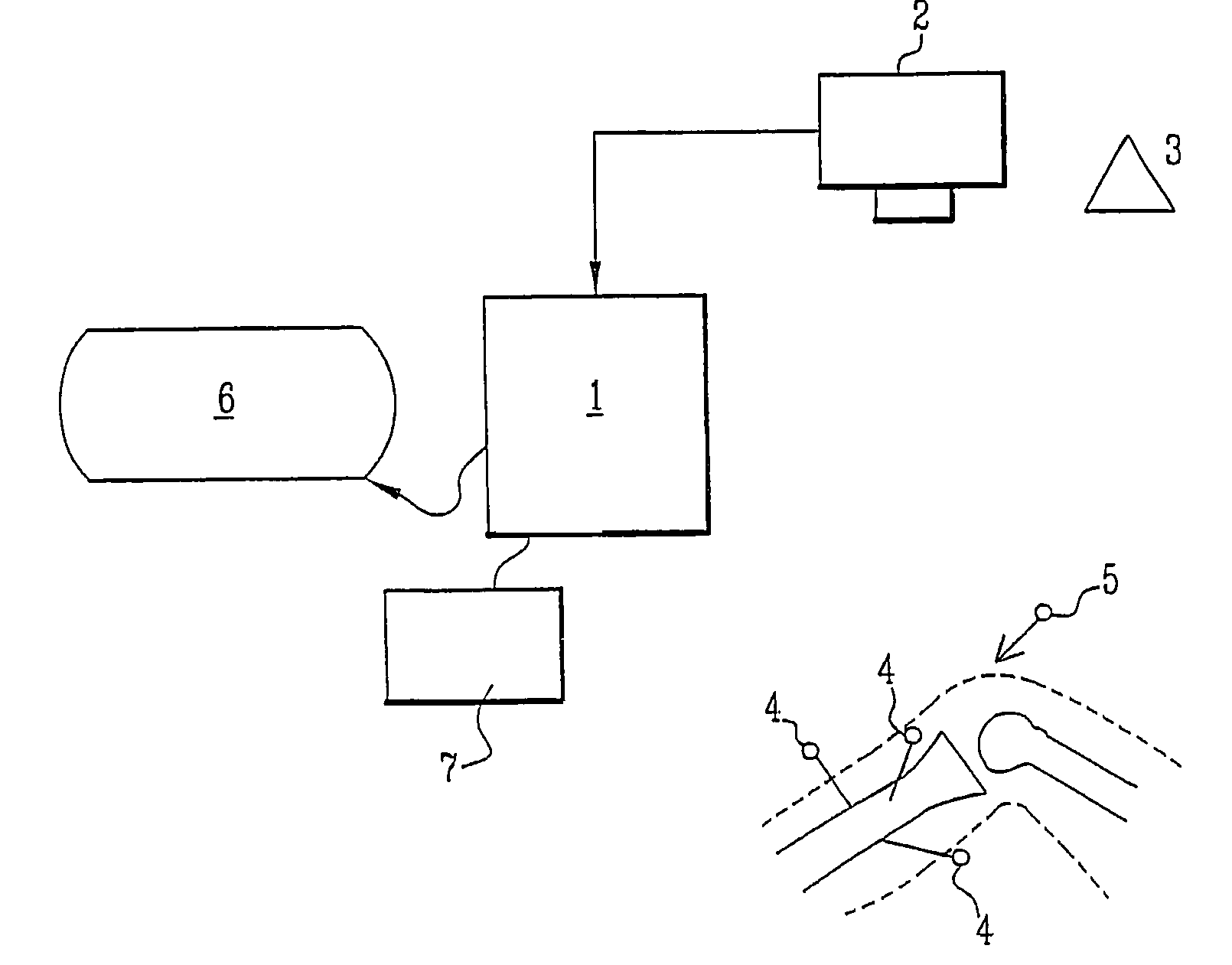Methods for selecting knee prosthesis elements and device therefor
a knee prosthesis and knee technology, applied in the field of knee prosthesis selection, can solve the problems of not always allowing optimal selection and/or positioning of the selected prosthesis element(s), preventing optimum biomechanics, etc., and achieve the effect of improving the possibilities and optimum functioning of the knee prosthesis
- Summary
- Abstract
- Description
- Claims
- Application Information
AI Technical Summary
Benefits of technology
Problems solved by technology
Method used
Image
Examples
Embodiment Construction
[0018]The term “angle of intermediate flexion” denotes an angle of approximately 20°±10° and preferably of 20°±5°; this angle is hereinafter called 20°.
[0019]The angle in extension is preferably 0°±10°, in particular 0°±5°; this angle is hereinafter called 0°. The angle of great flexion, preferably 90°, may be 90°±15°, in particular 90°±10°, preferably 90°±5°; this angle is hereinafter called 90°.
[0020]In a particularly preferred embodiment of the invention, the data is acquired in the following order: data at 20°, then data at 0°, then data at 90°.
[0021]According to the invention, it is verified by means of a computer that the angles at which the data is acquired actually correspond to the aforementioned angles, acquisition being denied if the corresponding angle is not observed.
[0022]The acquisition and processing of data corresponding to the intermediate angle of 20° and to the angle of extension at 0° may be used by the surgeon to consider whether the anatomical properties of th...
PUM
 Login to View More
Login to View More Abstract
Description
Claims
Application Information
 Login to View More
Login to View More - R&D
- Intellectual Property
- Life Sciences
- Materials
- Tech Scout
- Unparalleled Data Quality
- Higher Quality Content
- 60% Fewer Hallucinations
Browse by: Latest US Patents, China's latest patents, Technical Efficacy Thesaurus, Application Domain, Technology Topic, Popular Technical Reports.
© 2025 PatSnap. All rights reserved.Legal|Privacy policy|Modern Slavery Act Transparency Statement|Sitemap|About US| Contact US: help@patsnap.com


